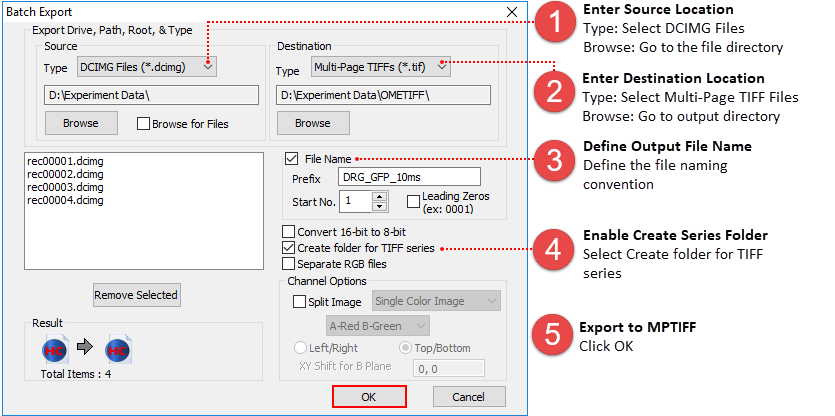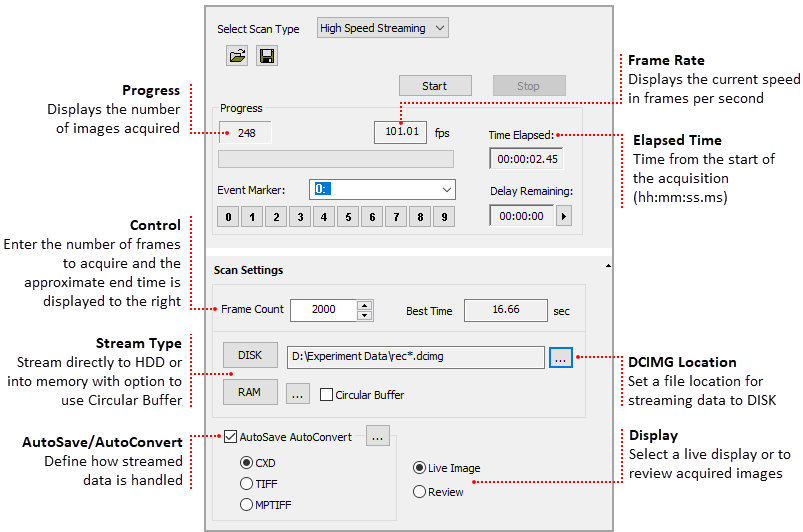
High Speed Streaming is used for acquiring data as fast as possible with a high speed camera. The data can be streamed to RAM or directly to the computer's hard drive(s). Other high rpm drives may be used but acquisition rate will depending on several factors, including: the type of hard drive(s), the speed of the hard drive(s), the hard drive configuration (RAID), and so on. The benefit of being able to stream directly to disk is time, not having to wait several minutes for something to be written to disk that only took seconds to acquire. Streaming to memory is very fast but then saving the data to disk takes time.
Note: Acquisition rates will vary based on the PC configuration, for information about the computer requirements, please see the PC Recommendations for ORCA-Flash4.0 V3.

Note: High Speed Streaming does not support: multi-channel acquisition, camera registration features (e.g., flip, rotation and pixel shift) or software processing operations (e.g., shade correction and rolling average).
The Scan Settings panel is easy-to-use, simply select the whether to stream to Disk or RAM, enter the number of images to capture and where to save the data.
When streaming to RAM, the image data is stored in memory and then the user has the option to save as either CXD, TIFF, MPTIFF or to delete the data. Up to 80% of the systems available memory will be used for storing streamed data. The Status Bar, located in the bottom left corner of the application window, displays the maximum number of frames that can be streamed to memory. In the AutoSave Properties dialog, the user can determine how and where to store the acquired data. Once the acquisition is complete, the data stored in memory can automatically be saved as a CXD, TIFF or MPTIFF.
Use AutoSave or AutoConvert to define where and how to store acquired data.
In the AutoSave Properties dialog, the user can determine how and where to store the acquired data. Image data can be saved as a CXD, TIFF or MPTIFF. The example below provides a description of the Auto Save Properties dialog.
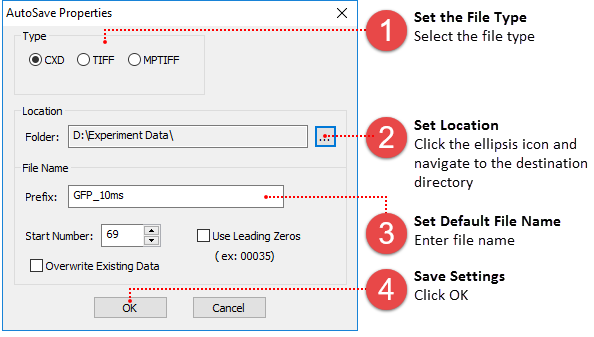
Note: MPTIFF files have a 65,000 image limit or 4 GB size limit. For image sequences having more than 65,000 images or larger than 4 GB, multiple MPTIFF files will be saved and numbered sequentially.
The Circular Buffer stores streamed data in memory, once the frame count has been reached, the previous acquired data is replaced sequentially. The cyclic process repeats until the acquisition is stopped, leaving the most recent images stored in RAM.
Once your are satisfied with capture settings and the sample is in focus, go to the Sequence pane and follow the steps below.
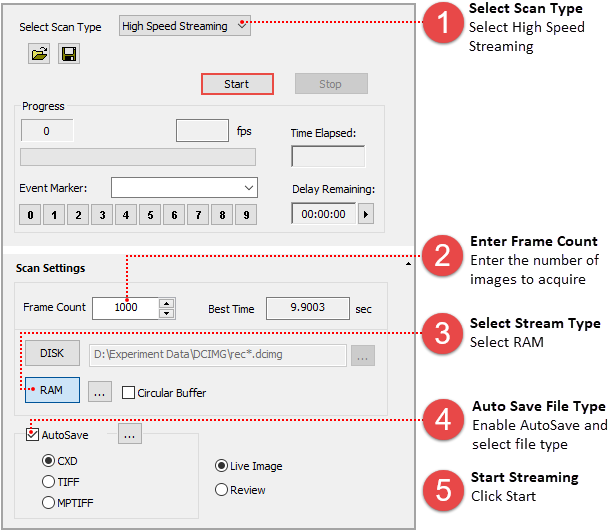
When streaming to disk, a temporary file (.dcimg) is created to store the data while it is being acquired, the temporary file location needs to be located on the RAID array, SSD drive, or the fastest drive available.
Configure the capture settings, go to the Sequence pane and follow the steps below.
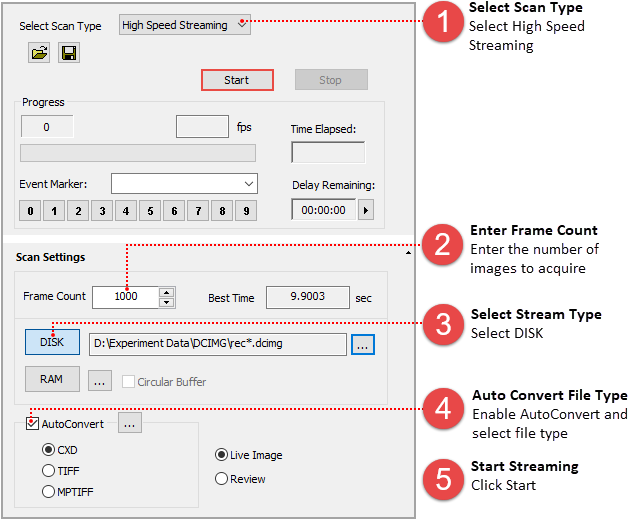
Note: To leave the streamed data as a DCIMG file disable AutoConvert.
Go to the File menu, select Batch Export and follow the instructions below.
